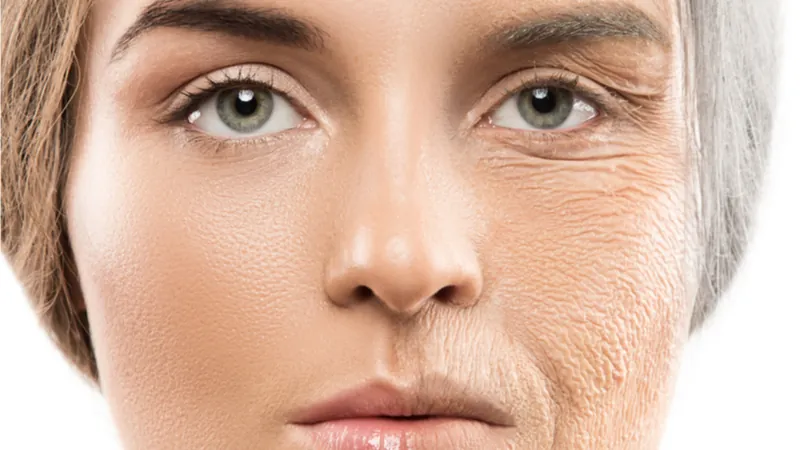Skin Structure and Aging
Skin, as the most readily visible organ of the human body, is one of the first to let us know that we are aging.
The structure of the skin
The skin is composed of three main layers: the epidermis, the dermis, and the hypodermis (also known as the subcutaneous tissue).
- Epidermis: This is the outermost layer of the skin and acts as a protective barrier. It is made up of several layers of cells, including the stratum corneum, stratum granulosum, stratum spinosum, and stratum basale. The epidermis contains melanocytes, which produce melanin, the pigment responsible for skin color. It also contains specialized cells called keratinocytes, which produce a protein called keratin that helps to strengthen and waterproof the skin.
- Dermis: The dermis is located beneath the epidermis and is thicker than the epidermis. It is composed of connective tissue and contains blood vessels, nerves, hair follicles, sweat glands, and sebaceous glands. The dermis provides structural support to the skin and contains collagen and elastin fibers, which give the skin its strength and elasticity.
- Hypodermis (Subcutaneous Tissue): The hypodermis is the deepest layer of the skin and is composed of fat cells (adipocytes) and connective tissue. It acts as an insulator, helping to regulate body temperature, and provides cushioning and protection to the underlying structures.
These three layers work together to protect the body from external factors, regulate body temperature, and provide sensory information.
Our skin goes beyond appearance; it protects our internal organs from bacteria, fungus, viruses, toxic chemicals, and various other harmful agents. It prevents us from excessive loss of water, insulates us from the cold, and sweats to cool us down when we are hot. Blood vessels in the skin expand and contract to help us release and conserve, respectively, the heat within our bodies. Skin is also the primary tissue for vitamin D synthesis and, crucially, provides us with the wonderful sensation of touch.
Damage to the skin can come in many forms, including UV light, trauma, burns, genetic predispositions, and pathogens. As with other tissues, skin deteriorates as we age. It becomes thinner, less elastic, more easily damaged, and less able to heal itself. The risk of developing skin cancer also increases dramatically as we age. Diabetes, a disease with many connections to aging, can cause a whole host of skin issues, including dryness, rashes, and diabetic ulcers.
Damage to the skin often results in scar tissue, which does not retain the same functional capabilities as healthy skin and can be chronically painful or sensitive. The psychological effects of scar tissue can also be quite devastating. In the worst-case scenarios, when wounds are too large or too deep or the skin’s ability to heal is too limited, such wounds can become chronic. In addition to being extremely painful, these sites are ripe for infections, which can be deadly.

